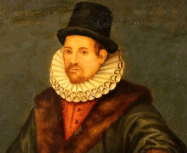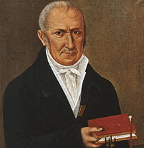History of Electricity reveals that its discovery wasn’t the work of a single individual. While the concept of electricity has been known for thousands of years, it took the combined efforts of many great minds to understand and harness it. In this article, we will explore the key pioneers and their contributions to the development of electricity.
We all know that electrical energy comes from another primary source of power. Many people wonder who discovered electricity and how it all started. In this article, we will briefly discuss the history of electricity.
First of all, electricity was not discovered by a single person. There are many great individuals who contributed to its discovery.
History of electricity
Electricity is a form of energy that occurs in nature, so it wasn’t “invented.” There are many misconceptions about who discovered it. Some credit Benjamin Franklin for discovering electricity, but his experiments merely helped establish the connection between lightning and electricity.
Uncovering the truth about the discovery of electricity is complex. It actually dates back over 2,000 years.

Around 600 B.C., the ancient Greeks discovered that rubbing amber (fossilized tree resin) with fur created an attraction between them, which is now known as static electricity. Moreover, researchers and archaeologists discovered a pot in the 1930s containing a copper sheet, which they believe to be an ancient battery used in Roman sites to produce light.
Similar devices have been found in archaeological digs in Baghdad. It is believed that the ancient Persians also used early forms of batteries. However, it wasn’t until the 17th century that several electrical discoveries were made, such as the invention of a primitive electrostatic generator, the differentiation between positive and negative currents, and the classification of materials as conductors or insulators.

In 1600, English physician William Gilbert used the Latin word “electricus” to describe the force created by rubbing certain materials. A few years later, another English scientist, Thomas Browne, wrote several books and used the word “electricity” to describe his investigations, which were based on Gilbert’s work.

Benjamin Franklin was one of the leading scientists of his time. He was interested in many branches of science and made several discoveries, including the invention of bifocal glasses.
By the mid-1700s, he became interested in electricity. Until then, scientists were mostly familiar with static electricity through experimental findings.
Benjamin Franklin made a significant leap by proposing that electricity has both positive and negative components, and it flows between these components. He also believed that lightning was a form of flowing electricity.
In 1725, Franklin conducted his famous experiment. He flew a kite during a thunderstorm to show that lightning was electricity.
To capture the electricity, he attached a metal key to the kite string. As he suspected, electricity flowed down from the clouds and gave him a shock. He was fortunate not to be injured, but his theory was proven: lightning and tiny electrical sparks are the same thing.
Franklin’s work inspired many other scientists to study electricity and to better understand how it worked. For example, in 1879, Thomas Edison invented the electric light bulb, and the world has been bright ever since.

Italian physicist Alessandro Volta discovered that certain chemical reactions could produce electricity, and in 1800, he invented the voltaic pile (an early electric battery) that generated a steady electric current. He was the first person to create a continuous flow of electrical charge.
Volta connected positive and negative charges through his invention, creating the first transmission of electricity by driving electrical charges (voltage).

In 1831, Michael Faraday built the first electric dynamo (a crude electricity generator), solving the problem of generating electricity in a practical and useful way.
Michael Faraday used a magnet inside a coil of copper wire to generate a small electric current, laying the foundation for later advances in electricity generation.
This breakthrough opened doors for American inventor Thomas Edison and British scientist Joseph Swan, who both developed the incandescent filament light bulb in 1878.

Earlier versions of light bulbs were invented by others, but the incandescent filament light bulb was the first practical bulb that could burn for several hours.
Later, Swan and Edison formed the first joint venture to manufacture practical filament bulbs, and in September 1882, Edison used his direct current (DC) system to light up the streets of New York for the first time.
In the late 1800s and early 1900s, Serbian-American inventor Nikola Tesla played a crucial role in the commercial production of electricity. He worked with Edison but later made revolutionary developments in electromagnetism and competed with Marconi for the patent for the invention of the radio. Tesla is best known for his inventions related to AC, the AC motor, and the polyphase distribution system.

American inventor and industrialist George Westinghouse bought Tesla’s patent for the alternating current (AC) motor and gradually convinced American society that the future of electricity would depend more on AC than DC.
Among others who worked to harness electricity are the Scottish inventor James Watt, the French mathematician Andre Ampere, and the German mathematician and physicist George Ohm.
So, it can be said that the discovery of electricity (History of electricity) was not the work of a single person. Although the concept of electricity had been known for thousands of years, when the time came to develop it commercially and scientifically, several great individuals contributed to solving the problem simultaneously.
Therefore, from the History of electricity, we can say:
#William_Gilbert discovered direct current electricity.
#Nikola_Tesla discovered alternating current electricity.
#Michael_Faraday defined the relationship between current, voltage, and resistance.
#Thomas_Alva_Edison invented the first electric bulb.
#Benjamin_Franklin was the first to provide the concept of electricity.
Additionally, many others might have contributed to the History of electricity. If you know of any, please comment. If the information is verified, we will include it in this article.
What is the timeline of the history of electricity?
The history of electricity spans thousands of years, from the discovery of static electricity by the Greeks around 600 B.C. to modern electrical innovations by figures like Thomas Edison and Nikola Tesla. Significant milestones include Benjamin Franklin’s experiments in the 1700s, Michael Faraday’s invention of the electric dynamo in 1831, and the rise of alternating current (AC) in the late 19th century.
When was electricity invented?
Electricity wasn’t “invented” since it’s a natural phenomenon, but its understanding and practical use developed over time. Key discoveries were made in the 17th and 18th centuries, with contributions from pioneers like William Gilbert, Benjamin Franklin, and later, Nikola Tesla and Thomas Edison.
What are the main sources of electricity?
The primary sources of electricity include fossil fuels (coal, oil, and natural gas), nuclear power, and renewable sources like solar, wind, hydroelectric, and geothermal energy.
What are the different types of electricity?
There are two main types of electricity: static electricity, which is the accumulation of electric charge on an object, and current electricity, which involves the flow of electric charge through a conductor. Current electricity can be further divided into direct current (DC) and alternating current (AC).
Who is the father of old electricity?
William Gilbert, an English physician, is often regarded as the “father of electricity” for his work in the 1600s, where he coined the term “electricus” and laid the groundwork for future electrical studies.
Why was electricity named?
The word “electricity” comes from the Latin term “electricus,” coined by William Gilbert in the 1600s to describe the force produced by rubbing materials like amber. The term was later refined by other scientists to describe the study of electrical phenomena.
What was Benjamin Franklin’s role in the history of electricity?
Benjamin Franklin is famous for his kite experiment in 1752, where he demonstrated that lightning is a form of electricity. This experiment helped prove the connection between electricity and natural lightning, laying the foundation for future electrical research.
What were Nikola Tesla’s contributions to electricity?
Nikola Tesla is best known for his work with alternating current (AC) and his invention of the AC motor and transformer. His contributions laid the groundwork for the widespread adoption of AC power, which is the standard for power transmission today.
What did Thomas Edison invent in relation to electricity?
Thomas Edison is renowned for inventing the practical incandescent light bulb in 1879. He also developed the first electrical power distribution system, which supplied direct current (DC) electricity to homes and businesses.
What did Michael Faraday discover about electricity?
Michael Faraday discovered electromagnetic induction in 1831, which led to the invention of the electric dynamo, the first practical method of generating electricity. His work laid the foundation for modern electrical generation.



